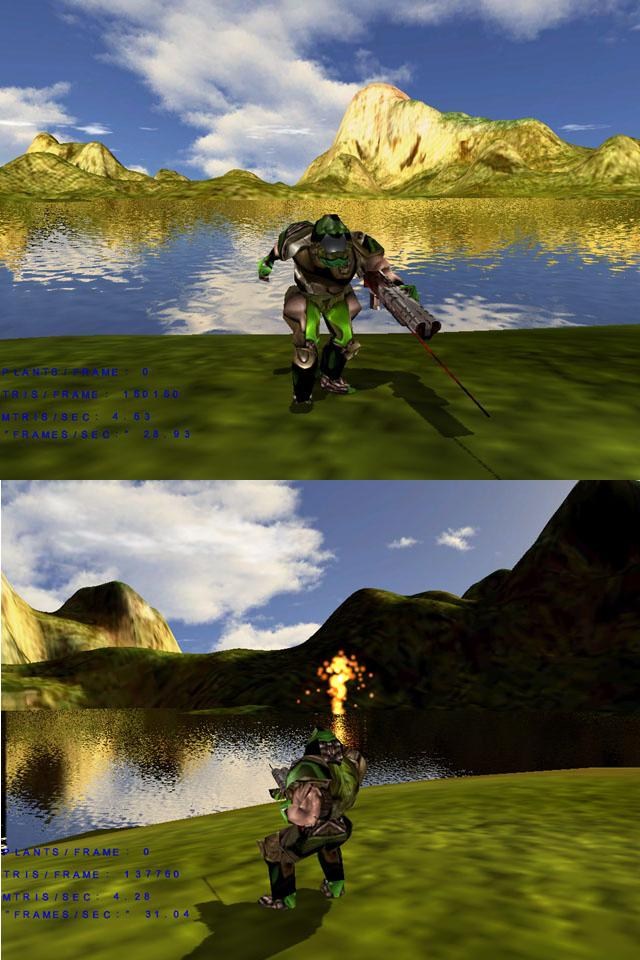 |

Submitted by , posted on 07 April 2002
|
 |

Image Description, by

These are two screenshots from my new OpenGL project.
Features:
terrain with a grid of 1024x1024 using VAR to achieve throughputs up to 12 MTris/sec
EMBM-Water with realtime reflections
skybox with moving cloud layers
simple particle system (2nd picture)
MD2/MD3 models
projective shadows
The terrain uses a very simple LOD system with 64x64 patches.These patches can have 4 different LOD states which depend
on the distance from the camera.(I think on today´s GPUs this is probably the best thing to do or what do you think?).
The water uses the texture shaders for perturbation.But this is still a little bit buggy because when you get too close to it
the texture projection fails because the Geforce3 can´t do projective offset 2d texturing and so I have to do this myself...
The shadows are just simple projective shadows. (black model rendered from lightpos and projected on the floor)
Before someone has to ask for it:
System specs: P4 2,0 GHz, Geforce 3
Phil.
|
|

